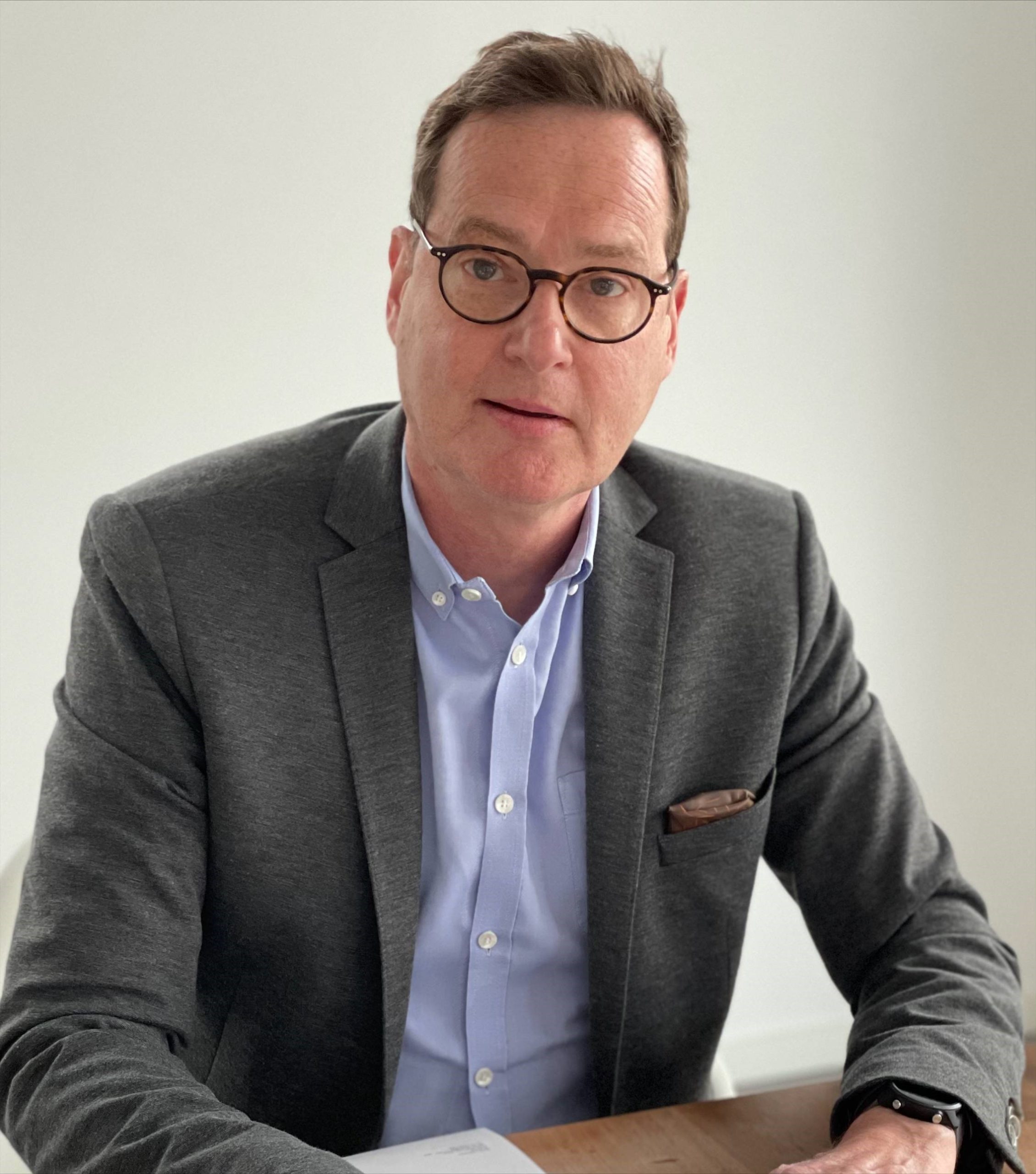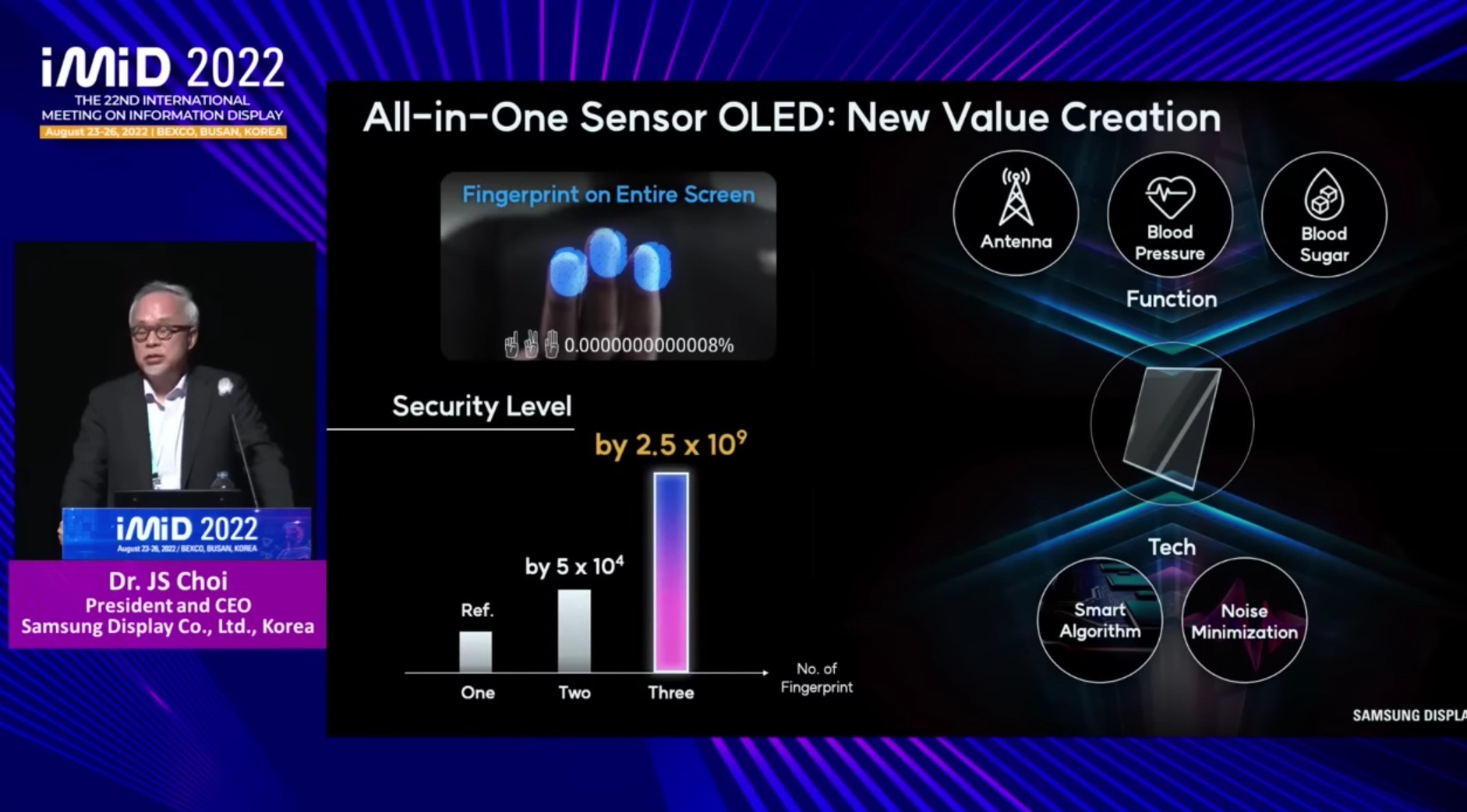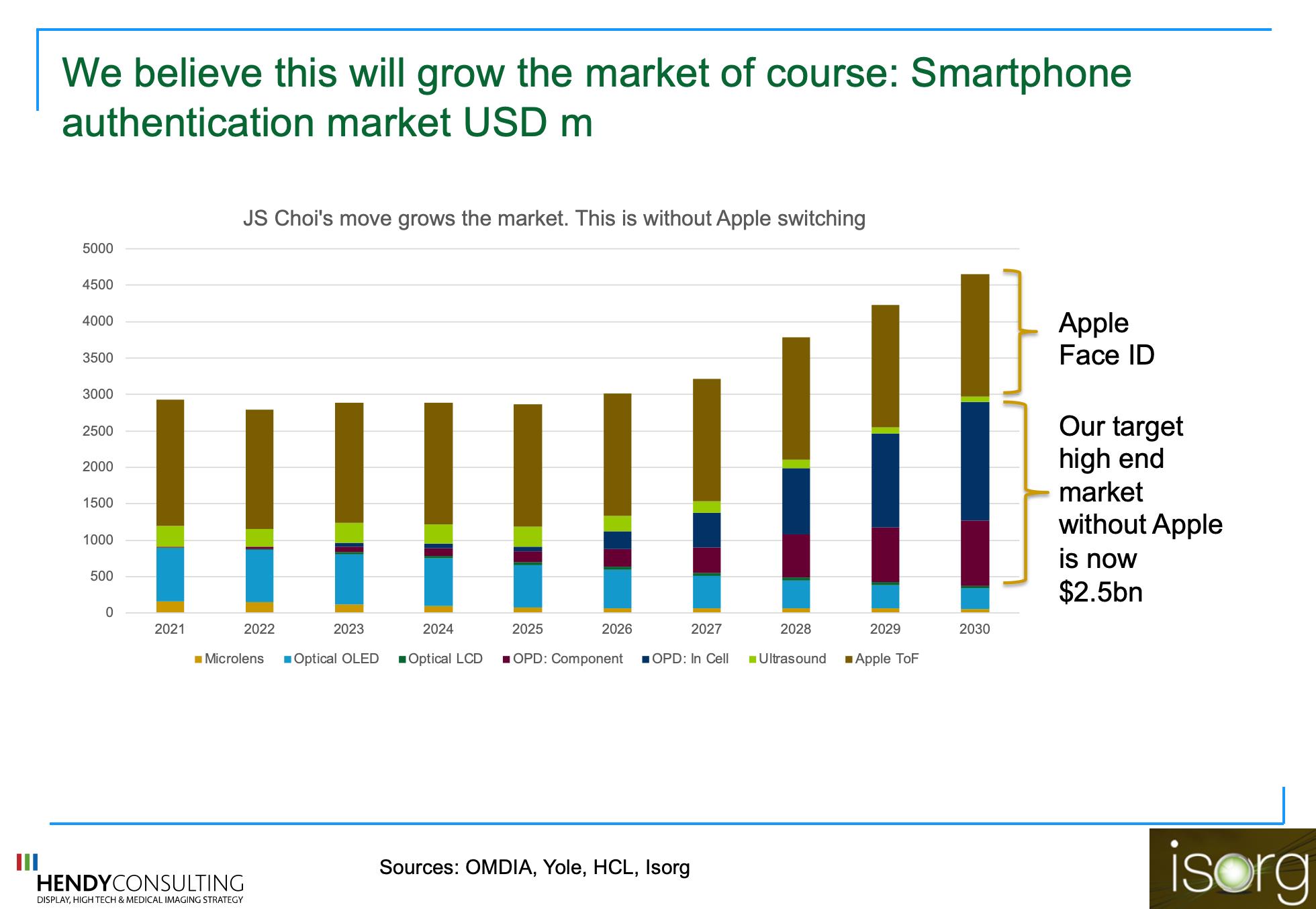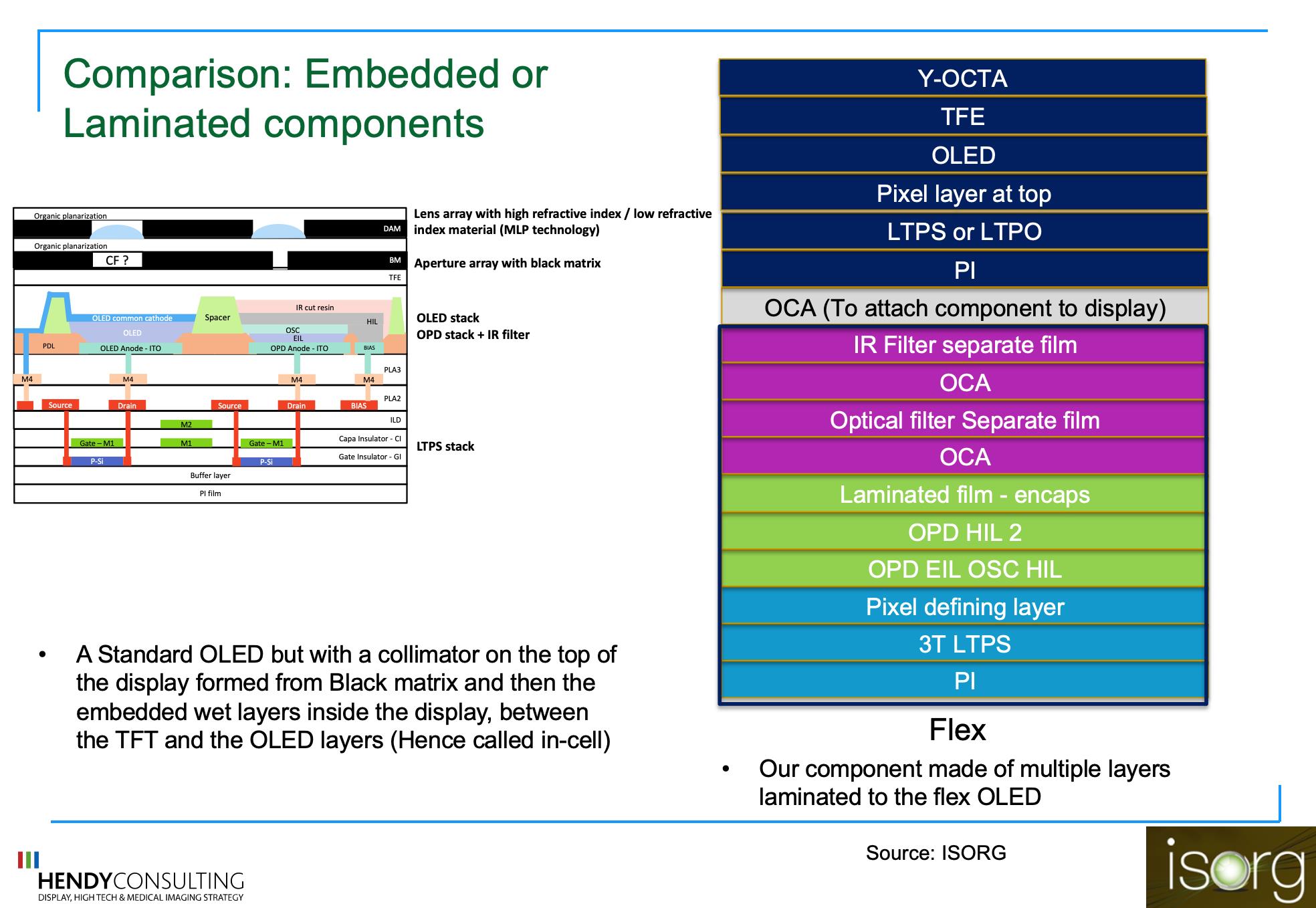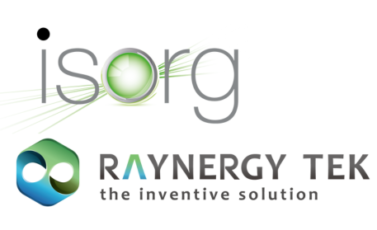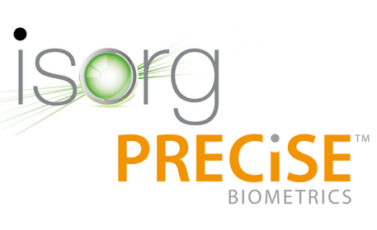Isorg is a French company based in Grenoble and Limoges in France, and the world centre of excellence for OPD technology (Organic Photo Diode). With more than 85 patents, Isorg is a rich-technology company focused on three main market opportunities: (i) Smartphone fingerprint sensing, (ii) Security applications such as identification and border-crossing markets, (iii) SWIR and NIR CMOS imaging markets for automotive, AR-VR and smartphone applications.
It has Gen 2 and Gen 3.5 factory capacity in France and a set of partnerships with leading companies in sensing and authentication. More can be found on Isorg here. In May 2022, CEO Dieter May left the helm of OSRAM Opto Semiconductors to join Isorg.
Isorg’s CEO Dieter May interview
Q1: Nice to meet you Dieter: You came from a big job at OSRAM to join a French Security startup, what did you see in Isorg?
Thanks for talking with us, Ron. I saw so much potential in three major markets that Isorg has, and real depth of technology. There was a real fit for my commercial orientation and I liked the opportunities the company represents in fingerprint sensing for OLED displays, the security markets themselves but also in SWIR/NIR sensing for automotive and other markets. This is a company with a very rich technology capability.
Q2: Thanks and what specific relevance is there to the OLED display market?
Well, Isorg has been working on OPD technology for multi-fingerprint sensing for a number of years. It is basically a very thin component sensor that can be laminated to an OLED display and allow for multi-fingerprint, high security on your mobile phone. We are probably considered to be world leading in this technology.
Recently SDC has announced that it will use a version of this technology as part of their OLED 2.0 for Smartphone devices. This validates that we have been on the right track and actually are ahead of where SDC may be, for timeline to mass production. What is nice is that we have the leading OLED player in the market saying that this technology and its applications is the future. If they adopt AIO (All in One) sensing, as they call it, across all their volume except Apple then this is at least a $2.5bn opportunity. This is huge. It will change the market.
Q3: And how is your technology different to what Samsung may do?
Samsung has said that they will do an in-cell version of our technology, which means the approach and some of the proprietary materials may well be the same, but they will take a yield hit trying to implement both the sensor and the collimator within the OLED display itself. Much like what happened in the iPhone 5 era when display players tried to implement in-cell touch solutions. Our approach, on the right here in the next figure, uses a separate component that can be laminated to the OLED display and our technology is basically ready today, whereas we hear that Samsung still has a way to go in their development.
Q4: Why do you think that this development will be important?
Of course, SDC validating that our technology is the future is great for us, but it is also great for the consumer. Today, with a single fingerprint the chances of getting a false positive (that is someone else opening your phone) is very small fraction of 1% (1 in 50000, 0.002% FAR is an often used standard). As our phones hold all our data, our personal photographs and our banking details, we think that we should be able to do better than that, and provide new customer experiences. With the OPD technology you can either use four finger authentication, raising security 2500 million times on the single finger version, or you can use “point to open” security on single specific apps. Touch that app and it even confirms who you are before opening the app. Only OPD technology can realistically scale to full screen sizes at reasonable cost and enable this.
Q5: You face a fearsome competitor then in Samsung, how do you feel about this?
Well, we think it is more important that handset makers can now be certain in their roadmap and product decisions that this is the future. Samsung will go for their in-cell approach and this will have technical difficulties independent of how skilled they are. Our technology is ready now for mass production in 2023, so we think we offer an earlier, lower risk path to market. We have options for in cell too.
Q6: Have you seen a difference since the Samsung announcement from the market place?
Well certainly, the handset makers seem more interested in full screen sensing and are asking questions about when Samsung may launch. And display players too have begun to ask us about our technology.
Q7: What is your prediction for the future then?
We predict that Samsung will launch this in 2025 and then OPD will become the de-facto standard for security on your mobile phone. We only wonder whether Apple too will adopt the technology since the single-finger point and unlock feature cannot be delivered with Face ID.
Q8: You also mentioned that Isorg has other market opportunities. What are these?
We also have a development for FAP30 and above sensors for the commercial biometrics and security market. Adoption in consumer electronics is very likely to be good news for adoption in these professional markets too. And also, very excitingly, our technology can be used in CMOS Imaging and LiDar for short range infra-red (SWIR) and near-IR (NIR) implementations in Automotive, AR-VR and Smartphone applications too. As I told you, Isorg is very rich in technology and opportunity.
Thank you for your time, Dieter, and good luck!
Discover the other news
Contact us
For any questions or further information feel free to contact us by filling this form...
